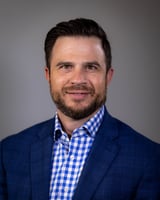Managing Contingent Workforce Spend: Services Procurement vs. Staff Augmentation
*This blog was updated in October 2023.
During times of economic uncertainty, it’s no question that organizations continually seek ways to cut costs while still getting work done. Often, this coincides with an uptick of companies turning to contract workers to achieve this goal. Spending has also increased in recent years on other forms of the extended workforce – including freelancers as well as services and solutions engaged via statement of work (SOW).
Though traditionally thought of as services procurement, as opposed to contingent workforce, it’s all talent-based in the end. So why not leverage many of the tools, processes and support structure used in staffing managed service provider (MSP) partnerships to ensure there’s similar control, insight and risk mitigation for such a large portion of a company’s spend portfolio?
Avoiding Unnecessary SOW Expenditures
Many organizations find they are spending more than necessary on services engaged via SOW due to guidelines and procedures inherent in their MSP program, such as tenure policies and headcount restrictions.
While in many cases SOWs are structured to account for project deliverables and the associated supplier risk, “consultants” often come with a higher rate than if the exact same worker was brought in through the staff augmentation model. Experience confirms the estimates that more than 20% of SOW-based work is in fact misclassified staff augmentation labor and the savings associated with this misclassification can easily exceed 20%.
To avoid this, organizations can instead integrate the management of both their staff augmentation and services spend for contingent workers. In doing so, worker classification can be triaged appropriately at the point of request and extra cost can be avoided – without sacrificing worker or project quality. By adopting an MSP to manage the intake, sourcing and engagement process for services, established category strategies and preferred suppliers can be leveraged. This provides much greater insight into the composition of the SOW details, as well as the associated labor component.
Further, overseeing the sourcing and engagement process for SOW services can enable companies to set sourcing strategies geared towards driving competitive bidding on projects with suppliers where appropriate, as well as maximizing supplier discounts and rebates. Yet even when organizations are aware of this, the shift to move all spending under one central management program has been gradual. This is because the merging of these two categories of spend often involves both HR and procurement collaboration.
Collaboration Between HR and Procurement is Key
While procurement may be responsible for SOW services, HR is often in charge of staff augmentation, and that is where the lines blur. The evolution of contingent workforce management and a holistic approach to talent (like the Universal Workforce Model™) is ever-changing, and as a result, the functions are divided over who should take responsibility for it.
Both HR and procurement have a role to play in this process, and the collaboration between these two groups is extremely important. Encouraging the functions to work together will allow companies to:
- Refocus on the work itself and what needs to get done
- Think creatively about what types of skills are required to drive desired outcomes
- Ensure cost savings and the best value for money (whether it’s the acquisition of a person or a service on a SOW)
Gain Control of SOW Engagements, Cut Costs
Lack of control is another major contributor to the cost of SOW engagements. This occurs because a SOW project often gets underway when a manager begins talks with their chosen firm and procurement often becomes engaged after scope and terms have been agreed upon between the two parties.
Such late involvement means the SOW project can be subject to less control than would be seen in staff augmentation, which can lead to an escalation of costs over time, through revisions and change orders.
While it can certainly be challenging, including both contingent workers and services within a single program can enable better business decisions, deliver savings and drive significant return on investment. Proper change management and communication is key to ensuring success. It is also critical to engage key stakeholders beyond just procurement and HR – from executives to end users – early on. All of these individuals need to understand the business drivers and the company’s overall goals and objectives, while seeing the real potential of efficiency, savings and value.
In the end, managing all services and labor-based spend through a single program, run by an MSP, ensures that internal procurement resources are best-utilized in strategic pursuits and relationship building and that the company’s objectives related to spend visibility, supplier management and savings recognition can be achieved through innovative ways.
As a trusted MSP partner, AGS helps our clients manage the sourcing and procurement-to-engagement process, overseeing distributed resources, activity and costs through one program. This results in consistent spend and cost savings, as well as improved responsiveness and risk control.
-min.png)





